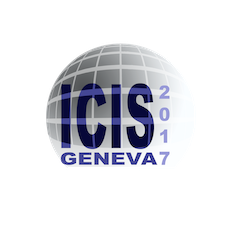Speaker
Description
The ITER baseline foresees 2 Heating and Current Drive Neutral Beam Injectors, HNB’s, operating at 1 MeV 40 A D$^0$, each capable of delivering 16.5 MW of deuterium ions to the plasma, with a 3rd HNB injector foreseen as an upgrade option that would bring up the total neutral beam power to 50MW [1]. In addition a dedicated Diagnostic Neutral Beam Injector, DNB, will be injecting a modulated 100 keV 60 A of H$^0$ for charge exchange recombination spectroscopy (CXRS) [2]. The R&D effort for the negative ion source for the neutral beam injectors of the International Tokamak Experimental Reactor (ITER) is well underway and results and achievements are reported by the collaborating laboratories in many contributions to this conference. This contribution reports the status of the integration of the HNB and the DNB systems into the ITER plant, the adopted design refinements and the new installation strategy.
As the ITER buildings construction is advancing and services are being installed, the interfaces between the different plant systems are frozen. Design improvements have been made to the duct liner however the asymmetric configuration required the preclusion of counter injection. At the preliminary design review of the absolute valve the panel requested a design modification to improve the manufacturability. The sealing solution of the beam line vessels has been reviewed and a double metallic seal solution developed. The magnetic field compensation system has also been reviewed using the construction design of the tokamak building and the manufacturing design of the ITER tokamak magnets.
In 2016 the ITER Council has approved the Overall ITER Project Schedule and – ad referendum – the Overall Project Cost: the schedule foresees First Plasma in 2025, followed by a staged approach to Deuterium / Tritium operation with full fusion power capability foreseen in 2035. Therefore, the Neutral Beam installation scenario has been reviewed and will now be performed in three stages: in the Phase I only captive services pipes will be installed, in Phase II the captive NB components and the power supplies and in Phase III the beam line components and Front-End-Components. This makes the Neutral Beams available on ITER for the pre-Fusion Operation, though currently exploration into possible advancement proposals is ongoing.
References
[1] R. Hemsworth, et. al., Nuclear Fusion, 49 (2009) 045006
[2] A. Chakraborty, et. al., IEEE Transactions on Plasma Science, 38 (2010) 248
